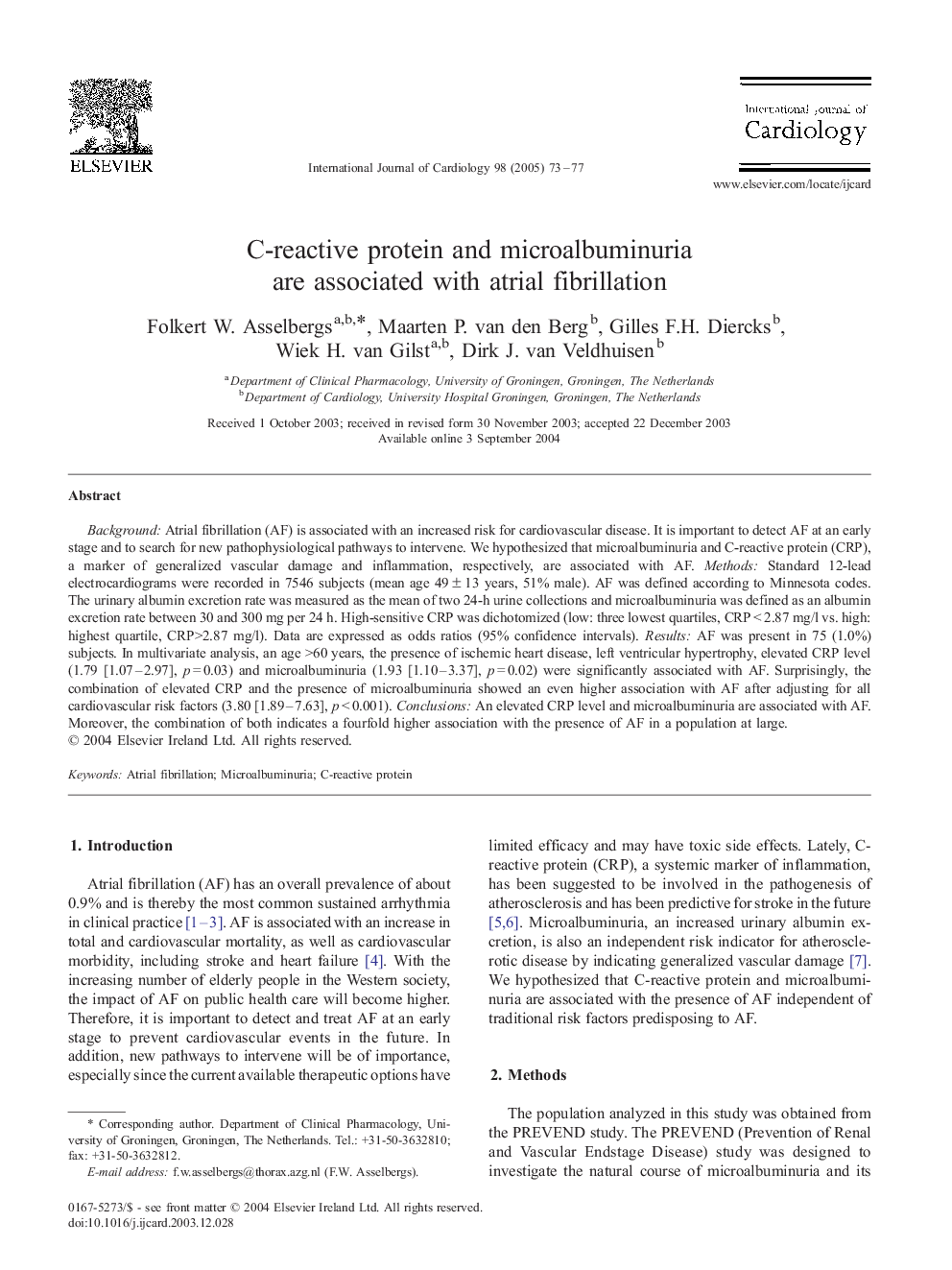| Article ID | Journal | Published Year | Pages | File Type |
|---|---|---|---|---|
| 9957160 | International Journal of Cardiology | 2005 | 5 Pages |
Abstract
Background: Atrial fibrillation (AF) is associated with an increased risk for cardiovascular disease. It is important to detect AF at an early stage and to search for new pathophysiological pathways to intervene. We hypothesized that microalbuminuria and C-reactive protein (CRP), a marker of generalized vascular damage and inflammation, respectively, are associated with AF. Methods: Standard 12-lead electrocardiograms were recorded in 7546 subjects (mean age 49±13 years, 51% male). AF was defined according to Minnesota codes. The urinary albumin excretion rate was measured as the mean of two 24-h urine collections and microalbuminuria was defined as an albumin excretion rate between 30 and 300 mg per 24 h. High-sensitive CRP was dichotomized (low: three lowest quartiles, CRP<2.87 mg/l vs. high: highest quartile, CRP>2.87 mg/l). Data are expressed as odds ratios (95% confidence intervals). Results: AF was present in 75 (1.0%) subjects. In multivariate analysis, an age >60 years, the presence of ischemic heart disease, left ventricular hypertrophy, elevated CRP level (1.79 [1.07-2.97], p=0.03) and microalbuminuria (1.93 [1.10-3.37], p=0.02) were significantly associated with AF. Surprisingly, the combination of elevated CRP and the presence of microalbuminuria showed an even higher association with AF after adjusting for all cardiovascular risk factors (3.80 [1.89-7.63], p<0.001). Conclusions: An elevated CRP level and microalbuminuria are associated with AF. Moreover, the combination of both indicates a fourfold higher association with the presence of AF in a population at large.
Related Topics
Health Sciences
Medicine and Dentistry
Cardiology and Cardiovascular Medicine
Authors
Folkert W. Asselbergs, Maarten P. van den Berg, Gilles F.H. Diercks, Wiek H. van Gilst, Dirk J. van Veldhuisen,
